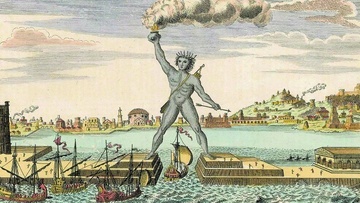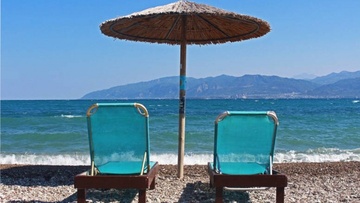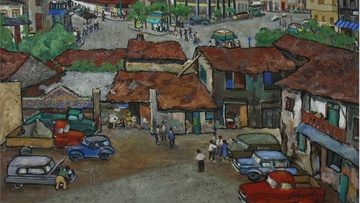The Colossus of Rhodes: Enigmatic Wonder of the Ancient World
ΑΝΑΓΝΩΣΤΗΚΕ 482 ΦΟΡΕΣ
The Colossus of Rhodes is familiar to everyone. Though this ‘wonder’ stood for no more than 66 years, its grand size and imposing presence at the coastal entrance of Rhodes made it an undeniable candidate as one of the Seven Wonders of the Ancient World.
Today there is much speculation as to its exact height, weight and location. An inscription found near the Palace of the Knights allows us to calculate the height approx., 33 metres (108 feet high) from feet to crown making the statue the tallest in the ancient world.
Most envisage the statue along the lines portrayed by the French traveler Rottiers in 1826, powerfully standing astride the entrance to the harbor, welcoming the ships.
THE COLOSSAL STATUE WAS ERECTED TO HONOR HELIOS THE PATRON GOD OF RHODES
Its history began with the siege of Demetrius Poliorketes, success of Alexander the Great in 305 BC.
As a result of this decisive victory, it was determined that a dedicatory statue be erected to honor Helios, the patron god of Rhodes.
This would prove rather straightforward for Rhodes, as Demetrius had left behind all of the equipment he and his army had used in his invasion attempts, and thus the Rhodians were able to finance the construction of the statue with the sale of the goods.
The people of Rhodes called on Greek sculptor Chares of Lindos in 280 BC., to cast a giant bronze sculptural depiction of Helios.
Over the course of 12 years, Chares of Lindos and his men worked to complete the statue. It is generally agreed that it was forged around towers of stone blocks, standing 110 feet high. The finished statue would have likely depicted Helios standing with his legs together.
When Rhodes suffered an earthquake in 226 BC., the Colossus broke at the knees, the top portion toppling to the ground, but never rebuilt.
Ptolemy III offered to reconstruct it, an oracle advised the Rhodians against it. For the next 900 years the ruins of the Colossus of Rhodes lay on the ground, attracting visitors from all over the world to witness its massive scale.
When the Arabs of Moab conquered Rhodes in 653 CE, the remains were broken down and transported to Syria, and likely sold piece by piece. But the legend was so closely linked to the name of Rhodes that for centuries afterwards both the Greeks and Europeans referred to the people of Rhodes as ‘Colossians’.









 Ακολουθήστε τη Ροδιακή στο Google News
Ακολουθήστε τη Ροδιακή στο Google News








